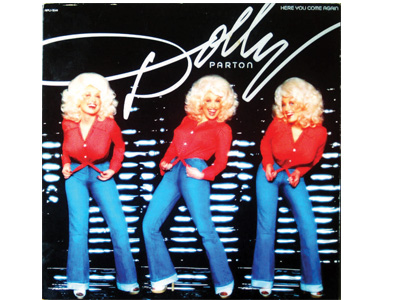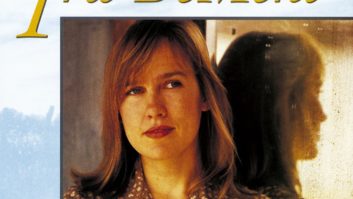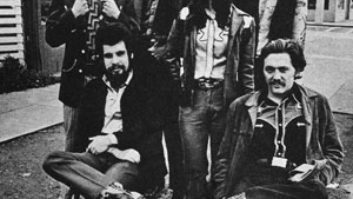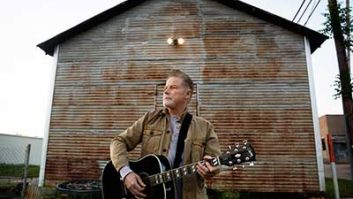
Armin Steiner can’t say enough good things about Dolly Parton.He had never worked with her before she came to L.A. to record this month’s Classic Track, “Here You Come Again,” but Steiner had certainly already worked with his share of stars, such as Neil Diamond and Barbra Streisand, while he was working for The Entertainment Company, and producers Charles Koppelman and Don Rubin. Yet, Parton made an indelible impression.
“As a human being—forget about her great gifts as an entertainer— this is the one of the most delightful people we’ve ever had in the entertainment industry,” Steiner says. “As a human being, she’s extraordinary. And she has such a beautiful voice, an incredibly identifiable sound, identifiable diction; she’s a fine writer and a great interpreter of lyrics. You believed what she sang. It’s all part of the talent and part of the human being. That’s part of the God-given talent you’re born with. It’s not something you can teach.”
Parton had been a country music star since her first full-length album, Hello, I’m Dolly reached Number 11 on Billboard’s Country Albums chart in 1967, but her management had been trying to break her into the pop charts for a year before they turned to Gary Klein to produce the album Here You Come Again, named for the title track written by Barry Mann and Cynthia Weil.
Steiner says the project had all the right ingredients: “A great song, a terrific lyric, a singer who just nailed the vocal because it was right in her best vocal range. The character fit her personality so perfectly.”
In a 1993 interview for Modern Drummer, Parton recalled that during her early recording days in Nashville, she had encountered a lot of male chauvinists in the music business, which made it difficult for her to speak up creatively. According to Steiner, by the time she came into Sound Lab Studios to record “Here You Come Again,” she had become quite comfortable asserting herself.
For example, Parton urged producer Gary Klein to add steel guitar, but to avoid making the song sound too country. Musician Al Perkins was hired to play some subtle steel on the track. The idea was to interest pop listeners without losing her country base.
The rhythm section on the track included Dean Parks (guitar), David Foster (keyboards), David Hungate (bass) and Jim Keltner (drums). The track opens with Foster’s Fender Rhodes. He recalls the session as fairly groundbreaking:
“I played the Fender Rhodes on the basic track,” Foster says. “Then I came up with the idea of duplicating exactly the same part on the acoustic piano, something I—or to my knowledge, no one—had ever done before. It became an interesting sound that years later became a stock ‘push of a button’ sound on many synthesizers, which some even called ‘Fosterized.’ “Also, I remember that while waiting to overdub the acoustic piano, no music was playing in my headphones and the tape op [second engineer] suddenly realized that he still had every track In Record and he ended up erasing about the first 20 seconds of the master,” Foster continues. “They had to go to an earlier take, splice them together and then I did my overdub acoustic piano part.”
Steiner captured the track via the custom Quad Eight console he built and designed. “It was a marvelous sounding machine,” he says. He says he originally had Stephens tape recorders, and when they became somewhat unreliable he changed to Studer 800’s. However, he can’t recall which he had during the cutting of this song.
Steiner does remember that the band recorded live with Parton, and while her vocal may have been intended as a scratch, at least parts were kept for the final. He says the “Here You Come Again” intervals were difficult to sing, but they were perfectly geared for her voice.
Keltner agrees; he recalls hearing a pretty great scratch vocal go down at that session and wonders if that may have been the one that ended up being the keeper.
There was “nothing to recording Parton’s voice,” Steiner says. “It was perfectly chiseled.” He says he probably used a Neumann M49 microphone. “A real singer doesn’t require all the B.S. we use today,” Steiner says. “We didn’t have Pro Tools to tune and all the gyrations we have today that we use to record.”
“I very seldom even use limiting for voices,” Steiner continues.
“There was magic between Dolly and Keltner,” Steiner says. “She had such respect for him and she also liked him a lot. They had such a great rapport.” Keltner laughs when he recalls a story from those days. He says he always wore jeans with holes in them back then. “She would see the holes in them, and then one day she showed up with holes in her designer jeans with the holes encrusted with rhinestones around them. Just something you would think Dolly would do.
“She was a pretty amazing person,” Keltner continues. “She wasn’t a pop star yet, but she was a huge star and she loved to act like it, but she did it in a cute way. She was very down-to-earth.”
Backing vocals were overdubbed by Parton, Nick DeCaro and possibly Gary Klein, Steiner says. A small string section was also overdubbed after the track was cut, arranged by Nick DeCaro, brother of Frank DeCaro, the guitarist. Steiner said there were probably just a couple of overhead mics. “We didn’t have large sections in those days,” Steiner says. “It didn’t need much, just a little color.” Steiner says what he remembers most about the track was how easy it was to record.
“In my career, the best and most significant records were the ones that were made with the least amount of trouble and the least amount of aggravation,” Steiner says. “You knew within the first three or four bars you had something special. That was especially true of the R&B stuff I did with Motown for years and years, when Holland-Dozier-Holland came in or Smokey Robinson or any of the great writers and groups. You knew in the first few bars it was a hit record. You could tell from the feel and the hook of the song that it was a hit record. Just the opening in the keyboard of ‘Here You Come Again’ is enough of an attraction to the ear to know this is something special.”
Steiner laughs recalling when Parton came to 20th Century Fox. She was there filming the movie Rhinestone with Sylvester Stallone and his crew was teasing him, saying, “You don’t know Dolly Parton.”
“I said, ‘Ok, that’s fine,’” he says. “She came out ontage after she finished the date and gave me a big hug and everybody was standing there with their mouths open because they didn’t believe me.”
As Steiner looks back on the making of “Here You Come Again,” he says the pop breakthrough song was a great accomplishment for Parton. The single, recorded in June, 1977 and released the following September, rose to Number 3 on the Billboard 100 chart, and it helped win Parton the Best Female Country Vocal award at the 1979 Grammy Awards.
“And I’m just glad I was somehow a small part of it,” Steiner says. “It was just one of those things that makes you think, ‘Those were the best days of the record business. I was very privileged to be in the right place at the right time.’”




